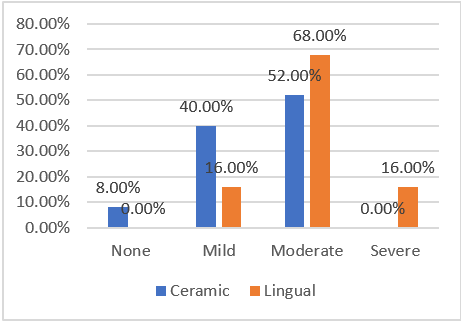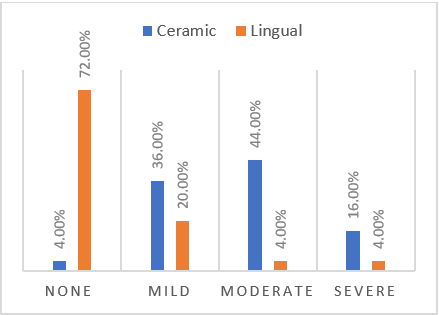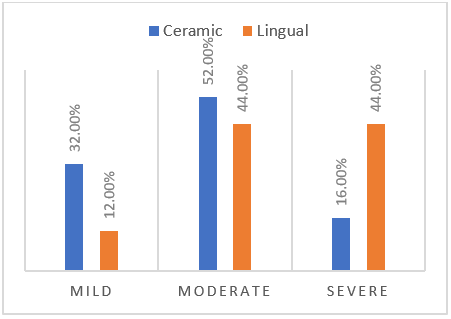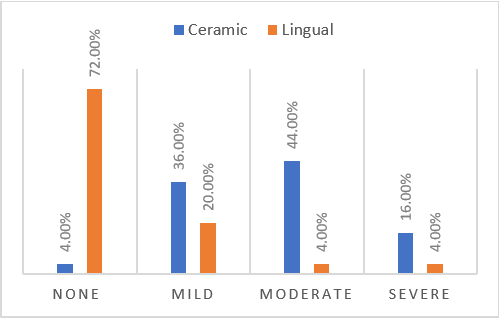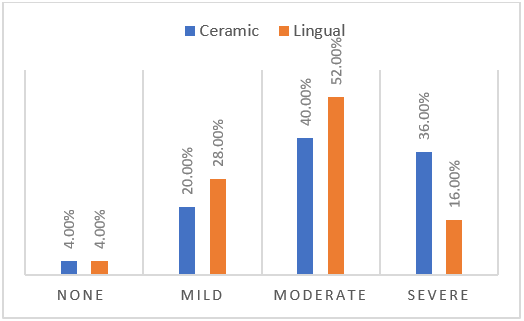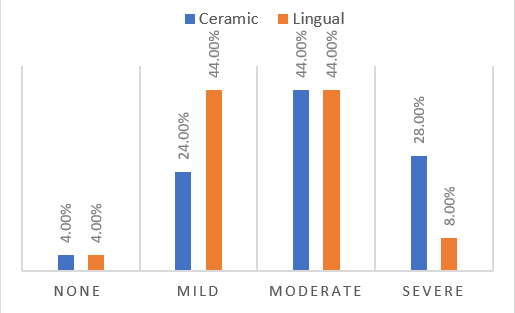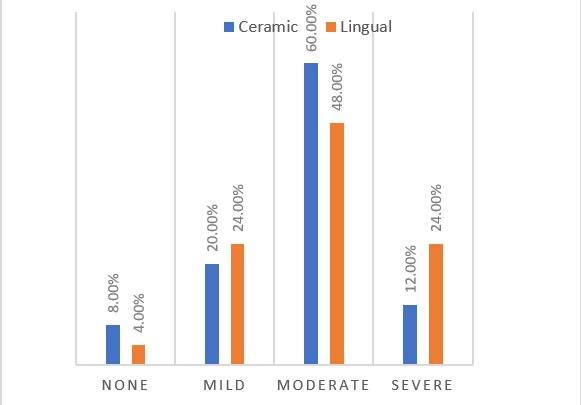Introduction
Orthodontic treatment has evolved significantly in recent years with the introduction of invisible orthodontic appliances, which aim to provide effective teeth alignment while minimizing the impact on patients' daily lives. Two popular options are fixed lingual metal brackets and fixed buccal aesthetic/ceramic brackets.1, 2, 3 This study aimed to analyse variations in patients' perceptions of oral health, aesthetic acceptance, pain perception, and comfort levels after undergoing orthodontic treatment with these two types of invisible orthodontic appliances.
Materials and Methods
A comparative survey was conducted to assess patient perceptions after the initial levelling and alignment phase of their orthodontic treatment. The survey was created using Google Forms and was distributed to 25 patients who received ceramic (labially treated) brackets and 25 patients who received lingual (lingually treated) brackets. The survey included questions related to comfort level, pain perception, speech impediments, quality of life, aesthetic perception, oral hygiene maintenance, and difficulties with food consumption. Descriptive statistics was obtained from google form. The chi square test was used to investigate significant difference between groups. The whole set of data was entered into MS Excel prior to statistical analysis (P-value 0.05 was regarded as statistically significant). To better understand the statistically significant difference, all findings are presented in tabular and graphical formats.
Results
Table 1
Statistical data on all the measured parameters in survey (In Percentage)
Key Observations
The Lingual Group generally experiences higher levels of pain and difficulty in speech compared to the Ceramic Group.
Discussion
In a comprehensive study comparing the experiences of patients treated with ceramic brackets versus lingual brackets in orthodontic therapy, several key findings emerged7. Notably, patients undergoing treatment with ceramic brackets reported significantly higher levels of comfort and considerably decreased pain perception compared to their counterparts with lingual brackets, as indicated by a p-value of 0.001. This suggests that ceramic brackets may offer a more comfortable and less painful orthodontic experience for patients.
Furthermore, the study revealed that patients with ceramic brackets experienced much less speech impairment and reported a higher quality of life throughout their orthodontic therapy journey. These outcomes underscore the potential advantages of ceramic brackets in terms of speech and overall well-being during treatment.
Aesthetic considerations also played a significant role in the study's findings. Patients with ceramic brackets were found to have considerably higher aesthetic ratings (p=0.001) compared to those with lingual brackets. Notably, a striking 72% of patients with lingual brackets reported no impact on aesthetics, while only 4% of ceramic bracket patients made the same observation. This suggests that ceramic brackets may be a preferred choice for individuals who prioritize the aesthetic aspects of their orthodontic treatment. 4, 5, 6, 7
However, when it came to oral hygiene maintenance, there was no statistically significant difference between ceramic and lingual brackets (p=0.238), indicating that both types of brackets can be equally manageable in terms of maintaining oral hygiene. 8
Lastly, in terms of difficulties with food consumption, the study found no significant disparity between patients with ceramic and lingual brackets (p=0.448). This suggests that neither type of bracket significantly impedes a patient's ability to consume food comfortably. 9, 10, 11, 12, 13
Conclusion
In summary, this study highlights the advantages of ceramic brackets over lingual brackets in terms of comfort, pain perception, speech impediment, quality of life, and aesthetic perception. However, both types of brackets appear to be equally effective in terms of oral hygiene maintenance and food consumption. These findings provide valuable insights for both orthodontic practitioners and patients when considering the choice of bracket type for orthodontic treatment.14, 15, 16, 17

